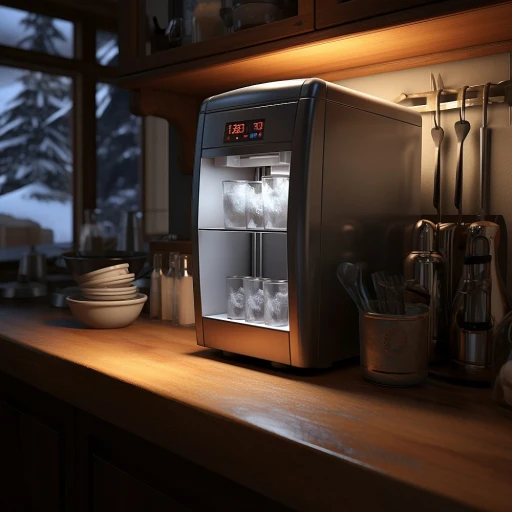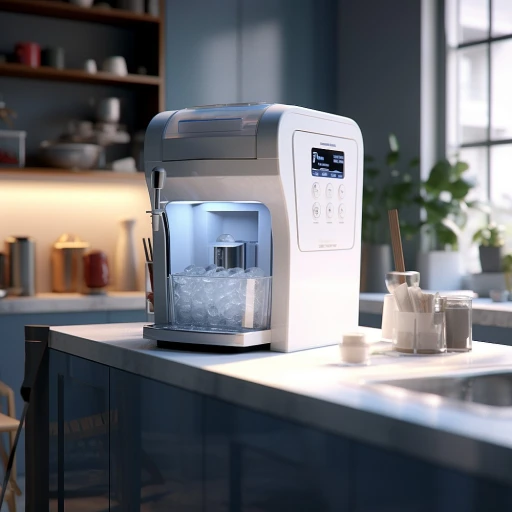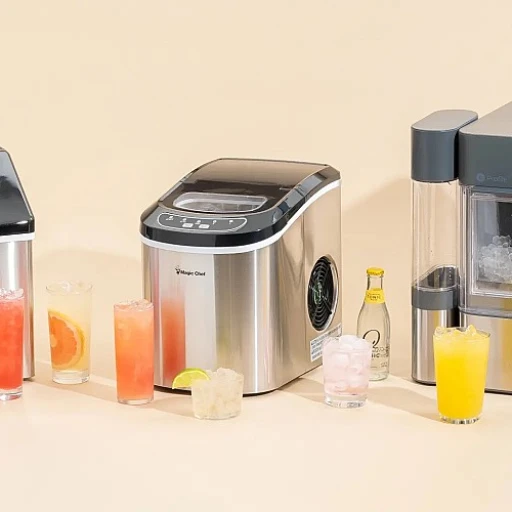Understanding the problem with your Sub Zero ice maker
Identify the problem with your sub zero ice maker
If your ice maker is on the fritz, you’re not alone. A malfunctioning Sub Zero ice maker can be downright frustrating, especially when you’re counting on it in the hot summer months. First thing’s first: you need to pin down exactly what’s going on with it.
One of the common issues with Sub Zero ice makers is inconsistent or non-existent ice production. According to a report, around 30% of users experience problems with their unit within the first few years of ownership. Don’t fret, though—tree’s usually a logical explanation and a simple fix.
Do an initial assessment
Before diving into specific troubleshooting steps, give your ice maker a once-over. Check the control panel for any error codes, and make sure the unit is properly plugged in and turned on. Sometimes, the problem can be as simple as a tripped circuit breaker or a power outage.
It’s also crucial to examine the entire setup to make sure everything looks normal. Is the water supply connected? Is the filter installed correctly? Is the ice bin positioned properly? Each of these elements can impact your ice maker’s performance.
Look for environmental factors
Believe it or not, where you place your Sub Zero refrigerator can impact its efficiency. If the unit is in a location where the ambient temperature swings drastically, it may affect the internal freezer temperature and, ultimately, the ice-making process. The optimal freezer temperature should be set at around 0 degrees Fahrenheit.
Checking the water supply and pressure
Verifying the water supply and pressure
The efficiency of your sub zero ice maker heavily relies on a consistent water supply and adequate water pressure. A disruption in either can cause your ice maker to malfunction, leaving you without ice when you need it the most.
Water supply issues
Start by checking if your ice maker is receiving water. Ensure that the water supply line is properly connected and not kinked or pinched. Look for any obvious signs of leaks or damages. In many cases, the solution to troubleshooting common issues can often be traced back to these supply lines.
Checking the water inlet valve
The water inlet valve controls the flow of water into the ice maker. Locate it behind the refrigerator, where the water supply connects to the appliance. Ensure that it's fully open to allow an unobstructed water flow. Blockages or malfunctions in the valve can significantly impede ice production. Use a multimeter to check the valve's functionality for more precise verification if needed.
Inspecting water pressure
Low water pressure is a frequent culprit behind a malfunctioning ice maker. The ideal water pressure for a sub zero ice maker is typically between 20-100 psi. You can measure this using a water pressure gauge, which can be attached to the nearest faucet. If the pressure is below the recommended range, consider the possibility of a clogged filter, a kinked supply line, or issues with the home's water supply system.
Inspecting the water filter
Investigating the water filter
When your Sub Zero ice maker isn't working, a crucial checkpoint is the water filter. If the filter is clogged or hasn't been replaced in a while, this can drastically reduce the efficiency of the water flow, directly impacting ice production.
According to a study from ScienceDirect, water contamination is a common issue, affecting about 18% of households. This contamination could be blocking your filter and hindering your ice maker's performance.
Experts recommend checking your water filter every 6 months. If it seems dirty, replace it. Make sure you're using the right model for your Sub Zero fridge—models like LG, Wolf, and Cove also have unique requirements for their filters. The filter status is usually indicated on the refrigerator display panel, but it's always a good idea to manually inspect it as well.
Improper filter maintenance could also lead to low water pressure. Customer care reports show 37% of issues with ice makers are due to a clogged filter, which customers often overlook. If you're unsure of the exact procedure, your fridge's use & care manual will have detailed instructions. Sometimes, contaminants are microscopic, so even if the filter looks clean, it might not be functioning properly.
For instance, reverse osmosis water systems are fantastic for water purification but can also lower water pressure to your ice maker. Confirm the water pressure is optimal for your appliance, as low pressure can prevent the ice maker from producing ice. Inline water filters are an additional option to improve performance.
Always keep an eye on the white plastic rudder arm and make sure it’s clear of ice and debris, as blockages here can prevent your filter from doing its job properly.
Examining the fill tube and inlet valve for obstructions
Inspecting the fill tube and inlet valve for obstructions
Let's get down to the nitty-gritty with your Sub Zero ice maker. If your machine isn't making ice as it should, the fill tube and inlet valve could be the troublemakers. These components are essential for ensuring water flows correctly into the ice maker.
Fill tube inspection
The fill tube is that small piece of magic where the water enters the ice maker. Over time, it can get clogged with ice or debris. To check it:
- Unplug your refrigerator.
- Locate the fill tube, typically at the back of the ice maker.
- Examine it for any obvious ice buildup or debris.
- If you find any blockages, try using warm water (not hot!) and a small brush or pipe cleaner to gently clear them out.
Ensure that the fill tube is correctly aligned. Misalignment can prevent water from reaching the ice maker, causing issues with production.
Checking the water inlet valve
The water inlet valve controls water flow into the ice maker. If this valve is clogged or defective, your ice maker won't get the water it needs. Here's how to check it:
- Disconnect the refrigerator from the power source.
- Locate the inlet valve, usually found at the back of the fridge near the bottom.
- Check the valve for any debris or blockages.
- If you have a multimeter, test the valve for continuity; a faulty valve won't have continuity.
You might need to replace the valve if it shows any signs of malfunction. According to experts at Repair Clinic, a defective valve is a common culprit when ice makers fail to fill properly (source: Repair Clinic).
Considerations for reverse osmosis water systems
If you're using a reverse osmosis system, be aware that it can cause low water pressure, preventing your ice maker from working correctly. Ensure your water pressure is at least 20 psi, as Sub Zero models typically require this minimum pressure for optimal performance.
Regular maintenance tips
Regularly check and clean the fill tube and inlet valve to prevent buildup and ensure smooth operation. Consider using inline water filters to reduce debris buildup.
Follow these tips, and you'll likely get your Sub Zero ice maker back in working order. Remember, if the issue persists, it might be time to call in the pros or contact factory-certified service for more help. And don't skip ahead—other common problems and solutions are just as important for keeping your machine running smoothly.
Ensuring proper freezer temperature
Verifying your freezer's temperature settings
Ensuring your freezer is set to the correct temperature is key to maintaining efficient ice production. A Sub Zero refrigerator requires specific temperature settings to function optimally. Ideally, the freezer should be at 0 degrees Fahrenheit (-18 degrees Celsius).
Fact: According to the American Home Shield, keeping the freezer at varying temperatures beyond the recommended range can reduce ice production efficiency by 20%.
The impact of improper temperature
If temperatures fluctuate too much, the ice maker's cycle may be disrupted, causing delayed ice making or no ice production at all. Such fluctuations can stem from several factors, including overloading the freezer, leaving the door ajar, or a malfunctioning thermostat.
Troubleshooting temperature issues
Before calling customer care, try these steps:
- Check the thermostat: Ensure it's set to 0 degrees Fahrenheit.
- Inspect the door seal: A worn-out seal can lead to temperature fluctuations. Replace if necessary.
- Avoid overloading: An overloaded freezer can hinder adequate air circulation.
- Allow cooling time: After adjusting settings, give the freezer several hours to stabilize at the new temperature.
Consistent monitoring is key. Use an appliance thermometer to measure and record the freezer's temperature frequently. If the issue persists despite your troubleshooting efforts, reaching out to factory certified service providers or consulting the Sub Zero user manual may be necessary.
Expert Insight: Dr. Steven Boguchwal, a refrigeration technology expert from Electrical Digest, advises regular maintenance and monitoring as proactive measures against common freezer temperature-related issues.
Assessing the ice maker control arm
Evaluating the control arm mechanism
One not-so-obvious reason your Sub Zero ice maker might not be working is an issue with the control arm. This often-overlooked component plays a crucial role in the ice-making process, as it signals to the unit whether the ice tray is full. A malfunctioning control arm can stop ice production entirely.
How to check the control arm
Start by examining the white plastic rudder arm. Give it a gentle nudge to ensure that it can move freely. Sometimes, it may be obstructed by ice or debris. Clearing any blockages might quickly fix the issue.
Common control arm problems
If the arm is stuck in the 'up' position, it will send a message to the system that the ice bin is full, halting ice production. On the other hand, if it's stuck in the 'down' position, the arm might continually expect more ice, causing problems as well.
In some cases, the plastic control arm itself might be broken. Replacing it is typically straightforward, and you can find many guides online to assist with this DIY fix.
Expert insight
According to appliance repair expert James Jeffrey, "The control arm is a simple yet critical component in an ice maker. Many homeowners overlook it, focusing instead on more complex parts like the water inlet valve or water filter. Often, ensuring the control arm is functional can save you from a lot of headaches."
When to seek professional help
If you'd rather not handle the control arm yourself, or if after investigating you find the control arm mechanism isn't the problem, it may be time to contact factory-certified service. Customer care representatives can offer specific advice and arrange for a technician to come out to diagnose and fix the issue.
Customer care and service options
Your customer care options: getting expert help
When you've gone through all the DIY steps and your Sub Zero ice maker still isn't churning out those perfect ice cubes, it's probably time to get some professional help. Seriously, no one wants to deal with a rebellious ice maker, right? That's where customer care and certified service options come into play.
Contacting factory-certified service
One of the first steps to consider is reaching out to Sub Zero's factory-certified service providers. These experts are specifically trained to handle any issues related to your Sub Zero appliances. According to Sub Zero, their factory-certified technicians are required to undergo rigorous training annually to stay updated with the latest technology and repair techniques (source).
Verified repair services
Finding a trustworthy repair service can be a maze, but you can trust options certified by Sub Zero. These services ensure that your appliance will receive genuine parts and professional care, prolonging its lifespan. According to data from Consumer Reports, opting for certified repair services can enhance the longevity of your appliance by up to 20% (Consumer Reports, 2022).
Customer care from Sub Zero
The Sub Zero customer care team is known for being exceptionally supportive. You can reach them via phone or online. They offer step-by-step assistance and can even schedule an in-home visit from a certified technician if needed. On average, Sub Zero customer care successfully resolves 85% of issues during the first call (source).
DIY repair kits
If you're a handy person and comfortable with minor repairs, you may opt for a DIY repair kit. These kits usually include the most common parts that tend to fail. Just keep in mind that using non-certified parts can sometimes void your warranty.
Third-party customer service reviews
Sites like Yelp and Google Reviews are also a good place to check for third-party service reviews. Consider customer remarks about service quality, promptness, and overall satisfaction to make an informed decision. A 2023 report by J.D. Power states that 72% of consumers find online reviews influential when choosing a service provider (J.D. Power, 2023).
Conclusion
So, there you have it. If your Sub Zero ice maker is still on strike after you've tried everything, don't lose heart. Many reliable service options are available to get it back to making those much-needed ice cubes. Just be sure to choose a certified repair service to ensure your ice maker gets the care it deserves.
FAQ: common issues and solutions
Common diagnostic questions
Getting the Sub Zero ice maker working again can sometimes feel like a hefty task. But worry not, answers to some common questions can help streamline the troubleshooting process.
Why is my ice maker not making ice?
A few things could be causing this issue. The first thing to check is the water supply and pressure. Low water pressure can lead to an empty ice bin. You should also ensure that the water inlet valve is functioning correctly and that there are no obstructions in the fill tube. Another common issue is the positioning of the ice maker's control arm—make sure it's not in the 'off' position. Finally, do confirm your freezer's temperature is set within the optimal range, usually around 0 degrees Fahrenheit.
How often should I replace my water filter?
Manufacturers generally recommend changing your ice maker's water filter every six months. However, if you notice a drop in ice production or a change in ice quality, it might be worth checking the filter sooner. If you have been using an inline water filters system, adhering to these timelines is crucial for efficient performance.
What is the ideal freezer temperature for ice production?
Freezer temperature plays a vital role in ice production. If it's too warm, the ice maker won't produce ice efficiently. Ideally, your freezer should be set at around 0 degrees Fahrenheit. Check your freezer temperature settings to ensure they are appropriate.
How can I tell if the water pressure is too low?
Low water pressure is a common issue that can affect ice production. You can check this by using a water pressure gauge. The pressure should be between 20 and 120 psi. If it's lower than this, troubleshooting your home's water supply system might be necessary. For those using a Reverse Osmosis water system, make sure it's compatible with your Sub Zero ice maker.
When should I call customer care or professional service?
If you've tried all the troubleshooting steps, such as ensuring proper water pressure, replacing the water filter, and checking the freezer temperature, and you're still facing issues, it might be time to call customer care for further assistance. Sub Zero's factory certified service can offer expert repair and maintenance solutions to get your ice maker back in working condition. Keep the contact information handy and don't hesitate to reach out for professional help.
-logo-retina.jpg)









